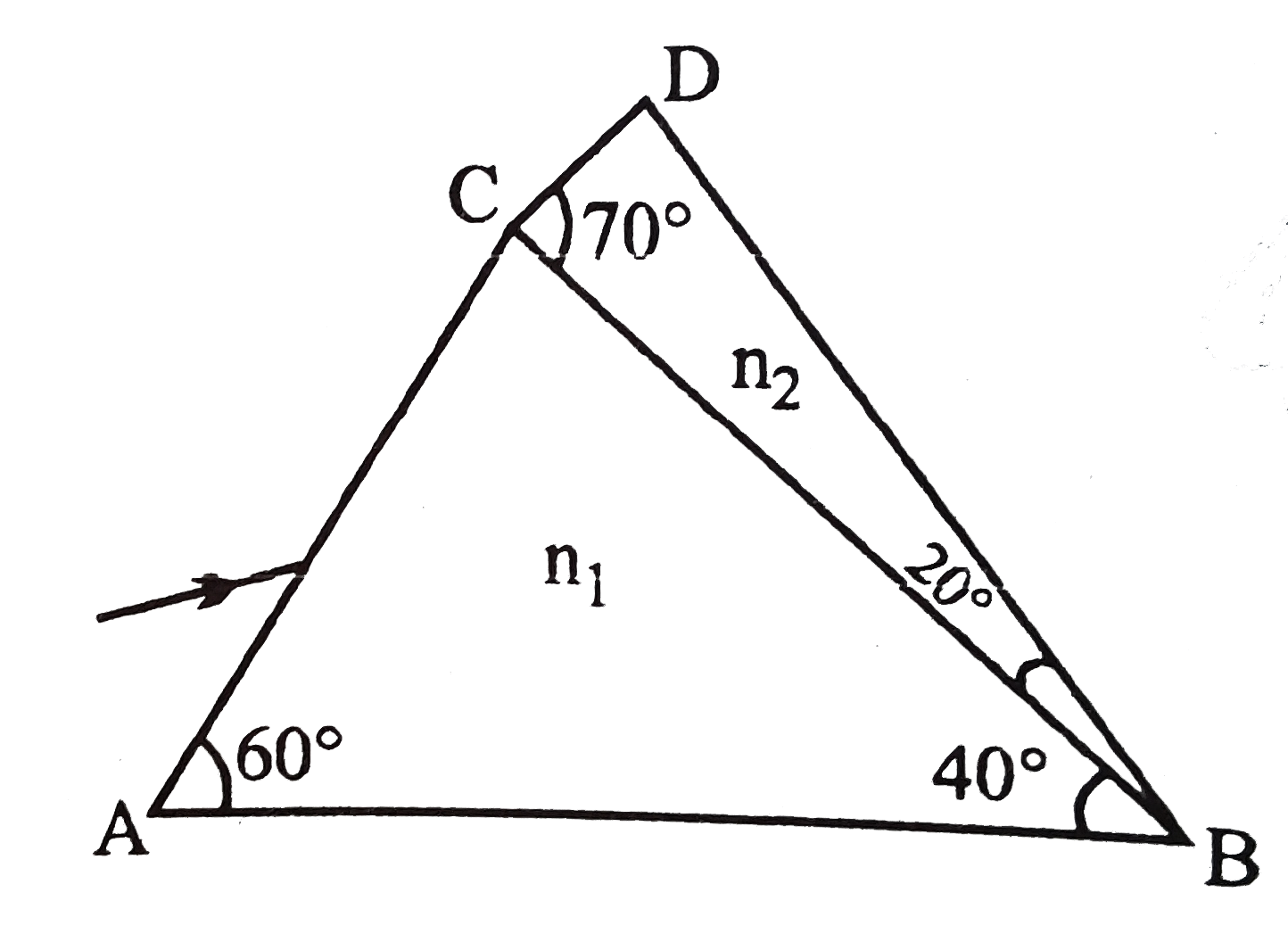Show that if a body is projected vertically upward from the surface of the earth so as to reach a height nR above the surface
(i) the increase in its potential energy is (nn+1)mgR,
(ii) the velocity with which it must be projected is √2ngRn+1, where r is the radius of the earth and m the mass of body.Solution in Gujrati
The correct Answer is:(i). [nn+1]mgR
(ii). √(nm+1)2gR
_E01_086_S01.png)
Ui=GMmR(1+n)⇒Ui=−GMmR
ΔUf−Ui=−GMmR[11+n−1]
by applying enegy conservation
12mv2=GMmR[1−11+n],v=√2GMR[1−11+n]
Topper's Solved these Questions
- GRAVITATIONBOOK - ALLEN CHAPTER - GRAVITATIONEXERCISE - Exercise 4 B (Brain Storming Subjective Exercise)
20 Videos
- GRAVITATIONBOOK - ALLEN CHAPTER - GRAVITATIONEXERCISE - Exercise 5 A (Previous Year Questions)
26 Videos
- GRAVITATIONBOOK - ALLEN CHAPTER - GRAVITATIONEXERCISE - Exercise 3 (Miscellaneous Type Questions)
20 Videos
- GEOMETRICAL OPTICSBOOK - ALLEN CHAPTER - GEOMETRICAL OPTICSEXERCISE - subjective
14 Videos
- KINEMATICS-2DBOOK - ALLEN CHAPTER - KINEMATICS-2DEXERCISE - Exercise (O-2)
47 Videos
Similar Questions
A small satellite revolves around a heavy planet in a circular orbit. At certain point in its orbit a sharp impulse acts on it and instantaneously increases its kinetic energy to 'k' (<2) times without change in its direction of motion show that in its subsequent motion the ratio of its maximum and minimum distance from the planet is k2−k assuming the mass of the satellite is negligibly small as compared to that of the planet.
View SolutionIf suddenly the gravitational force of attraction between earth and satellite revolving around it becomes zero, then the satellite will
View SolutionStatement-1: Two satellites A & B are in the same orbit around the earth B being behind A. B cannot overtake A by increasing its speed.
Statement-2: it will then go into a different orbit.
View SolutionA prism of refractive index n1 & another prism of reactive index n2 are stuck together without a gap as shown in the figure.The angle of the prisms are as shown. n1&n2depend onλ,the wavelength of light according to n1=1.20+10.8×104λ2&n2=1.45+1.80×104λ2 where λ is in nm.

(i)Calculate the wavelength λ0for which rays incident at any angle on the interfaceBCpass through without bending at that interface.
(ii) for light of wavelength λ0,find the angle of incidencei on faceACsuch that the deviation produced by the combination of prism is minimum.
View SolutionA particle is moving in xy-plane .At certain instant the components of its velocity and acceleration are as follows ux=3m/s,uy=4m/s,ax=2m/s2anday=1m/s2. The rate of change of speed at this moment is
View SolutionShow that if a body be projected vertically upward from the surface of the earth so as to reach a height nR above the surface (i) the increase in its potential energy is ((n)/(n + 1)) mgR , (ii) the velocity with it must be projected is sqrt((2ngR)/(n + 1)) , where r is the radius of the earth and m the mass of body.
View SolutionIf a body is to be projected vertically upwards from earth's surface to reach a height of 10R where R is the radius of earth. The velocity required to be si is
View SolutionAn object is projected vertically upward from the surface of the earth of mass M with a velocity such that the maximum height reached is eight times the radius R of the earth. Calculate:
(i) the initial speed of projection
(ii) the speed at half the maximum height.
View SolutionA body is to be projected vertically upwards from earth's surface to reach a height of 9R , where R is the radius of earth. What is the velocity required to do so? Given g=10ms^(-2) and radius of earth =6.4xx10^(6)m .
View SolutionA body is projected vertically upwards from the surface of earth with a velocity equal to half the escape velocity. If R be the radius of earth, maximum height attained by the body from the surface of earth is Rn. Find the value of n.
View Solutionपृथ्वी तल से पृथ्वी की त्रिज्या की n गुनी ऊँचाई तक किसी पिंड की स्थितिज ऊर्जा में कितनी वृद्धि होगी? इसके लिए आवश्यक प्रक्षेपण वेग भी ज्ञात कीजिए ।
View SolutionA body is projected vertically upwards with a speed of sqrt((GM)/R) ( M is mass and R is radius of earth ) . The body will attain a height of
View SolutionA body of mass m is raised from the surface of the earth up to a height equal to the radius R of the earth. If the acceleration due to gravity on the earth's surface is g , prove that the potential energy of the body has increased by 1/2 mgR.
View SolutionThe velocity with which a body should be projected from the surface of the earth such that it reaches a maximum height equal to n times the radius R of the earth is
View SolutionThe velocity with which a body should be projected from the surface of the earth such that it reaches a maximum height equal to n times the radius R of the earth is
View SolutionThe velocity with which a body should be projected from the surface of the earth such that it reaches a maximum height equal to n times the radius R of the earth is
View Solution
